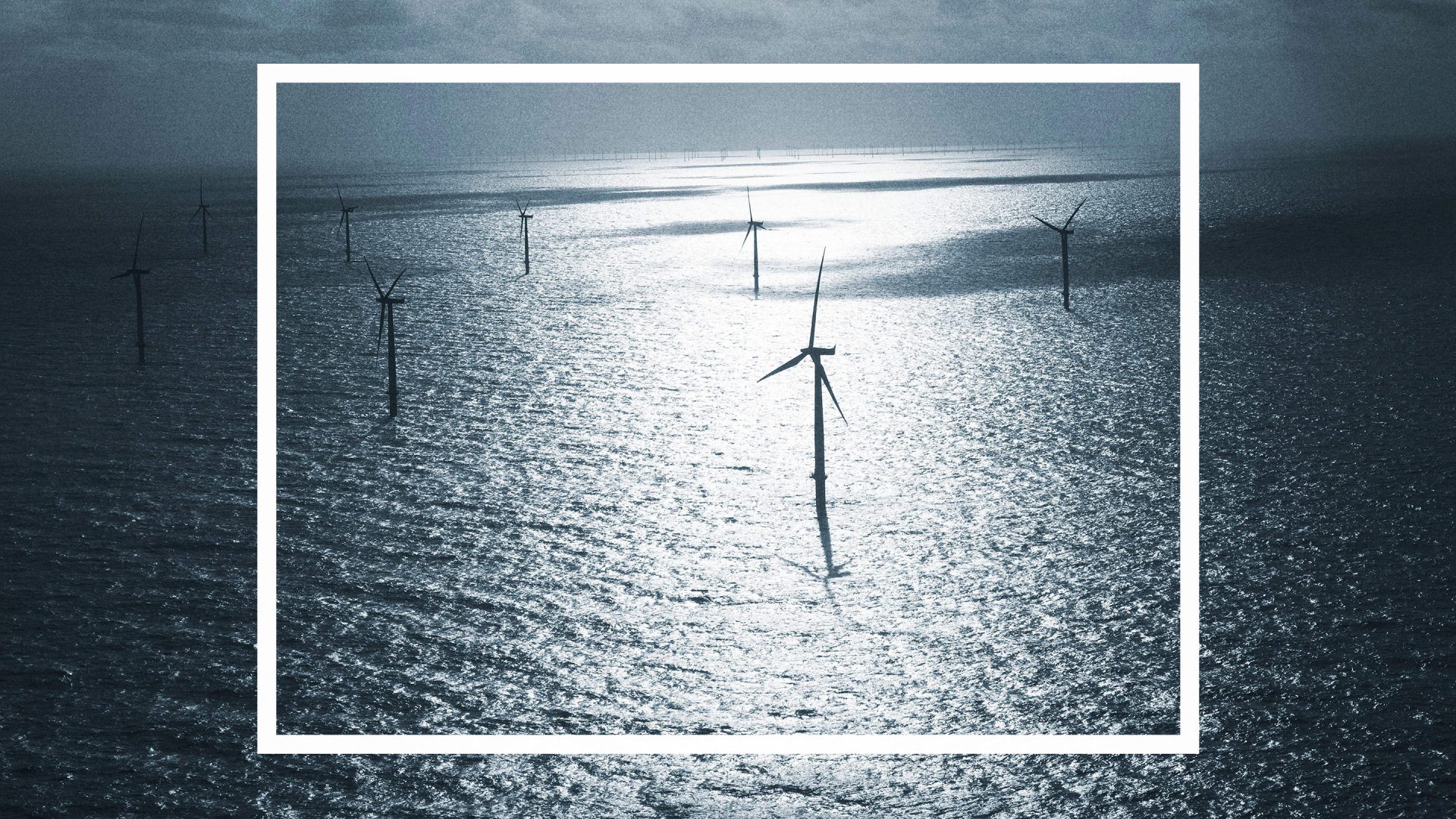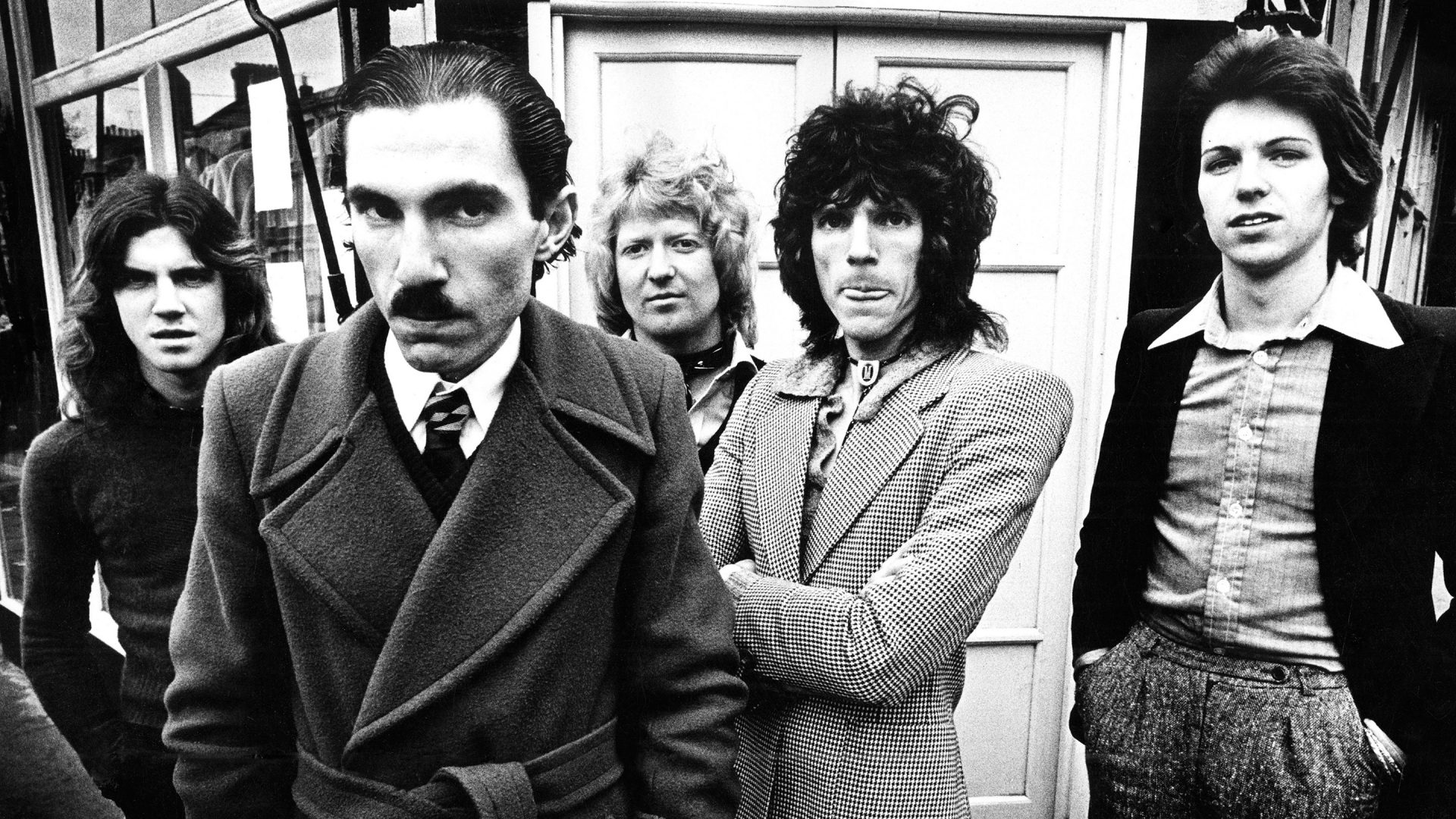The sunset was stunning. Even at almost 10 in the evening, in Aalborg, northern Jutland, there was still a strip of brilliant orange and yellow above the darkening waves of Limfjord. Saturday night restaurant – and bar-goers wandered around near the water’s edge, where the silhouette of a warship jarred with the picture of peace and calm.
Sailors were returning in ones and twos to HDMS Thetis after an evening ashore. Thetis once took part in anti-piracy operations off the Horn of Africa, but its presence here seemed to serve as a reminder that today there are much closer threats. In April, a joint investigation by Scandinavian broadcasters concluded that a Russian ship had been surveying windfarms in the Baltic and North Seas, perhaps identifying possible targets for sabotage in the event of war.
Wind technology has become a major part of the Jutland economy. Giant turbines lie in pieces in the dock area of Esbjerg, in preparation for being shipped out into the North Sea. From there, they send the power to drive Denmark’s economy and meet the energy needs of its homes. Seen relatively close, the turbines’ huge blades look like monstrous creatures captured at sea. In fact, they are waiting to be sent out there.
More than energy has been coming ashore in Esbjerg in recent weeks. At the end of April, an American freighter arrived with 30 military helicopters and up to 1,000 other pieces of material on board. The hardware was headed further east, part of Operation Atlantic Resolve, launched originally in 2014 after Russia’s annexation of Crimea – and scaled up since February 2022. Such is the scale of the operation that the Danish police declared two temporary military zones in Esbjerg until the beginning of June.
This stretch of coast is scarred by Europe’s history of war. Esbjerg lies only a little more than 300km from Hamburg. During the German occupation of Denmark in the second world war, as Hitler’s regime began to fear an allied invasion, they fortified Denmark’s western edge with bunkers and gun emplacements so solidly built they defied postwar destruction. Many remain.
Yet it is an even older war that still resonates, and one that perhaps even played a part in Denmark’s decision not to resist the invading German army in April 1940. In 1864, buoyed by victory in a war in 1848 over Schleswig-Holstein, the Danish army faced a mostly Prussian force attacking from the south. With superior troops and artillery, the invaders soon crushed their Danish foes: crushed them so completely that the defeat was a scar on the Danish national psyche that endured through almost the entire 20th century – and also dictated foreign policy until German power in another form, the Third Reich, was on the wane.
As Denmark’s former royal historian, Knud Jespersen, wrote of the 1864 defeat: “From then on it was no longer possible for Denmark to pursue a foreign policy which conflicted with German interests, and changing governments, right up to the fall in 1943 of the government during the German occupation, acted accordingly.”
When that occupation ended, there was a standoff with Stalin’s Soviet Union. Victorious occupiers of Berlin at the end of the war, the Soviets wanted to see their rewards in terms of territory – as many countries who were “liberated” into the eastern bloc found out. The Danish island of Bornholm, in the Baltic, was almost included in Moscow’s share of cold war Europe. On my only visit to Bornholm, back in 2004, I was reminded of Russia’s proximity when I saw in the harbour a yacht (the small kind with sails, not an oligarch’s helicopter pad) registered in St Petersburg. Eventually, even Stalin’s steely grip loosened when an undertaking was given that there would be no western military bases built there.
Today, a later occupant of the Kremlin looms over Europe. With weapons heading east, and wind turbines heading west to catch the winds of the North Sea, Jutland, at the edge of the EU, finds itself at the centre of the responses to two of the biggest challenges posed by Vladimir Putin: future energy supplies, and war in Ukraine.



